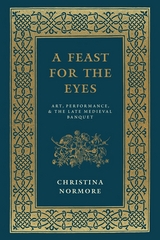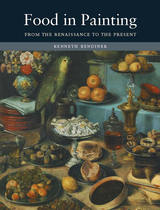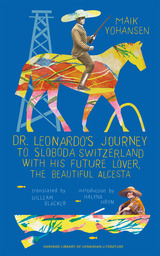2 books about Dinners and dining in art

A Feast for the Eyes
Art, Performance, and the Late Medieval Banquet
Christina Normore
University of Chicago Press, 2015
To read accounts of late medieval banquets is to enter a fantastical world where live lions guard nude statues, gilded stags burst into song, and musicians play from within pies. We can almost hear the clock sound from within a glass castle, taste the fire-breathing roast boar, and smell the rose water cascading in a miniature fountain. Such vivid works of art and performance required collaboration among artists in many fields, as well as the participation of the audience.
A Feast for the Eyes is the first book-length study of the court banquets of northwestern Europe in the fourteenth and fifteenth centuries. Christina Normore draws on an array of artworks, archival documents, chroniclers’ accounts, and cookbooks to re-create these events and reassess the late medieval visual culture in which banquets were staged. Feast participants, she shows, developed sophisticated ways of appreciating artistic skill and attending to their own processes of perception, thereby forging a court culture that delighted in the exercise of fine aesthetic judgment.
Challenging modern assumptions about the nature of artistic production and reception, A Feast for the Eyes yields fresh insight into the long history of multimedia work and the complex relationships between spectacle and spectators.
A Feast for the Eyes is the first book-length study of the court banquets of northwestern Europe in the fourteenth and fifteenth centuries. Christina Normore draws on an array of artworks, archival documents, chroniclers’ accounts, and cookbooks to re-create these events and reassess the late medieval visual culture in which banquets were staged. Feast participants, she shows, developed sophisticated ways of appreciating artistic skill and attending to their own processes of perception, thereby forging a court culture that delighted in the exercise of fine aesthetic judgment.
Challenging modern assumptions about the nature of artistic production and reception, A Feast for the Eyes yields fresh insight into the long history of multimedia work and the complex relationships between spectacle and spectators.
[more]

Food in Painting
From the Renaissance to the Present
Kenneth Bendiner
Reaktion Books, 2004
From the hearty meals being devoured by peasants on a Bruegel canvas to the lush and lifelike fruits of a trompe l'oeil, food has enjoyed a central place in painting for centuries. These two great sensory pleasures come together in the sumptuously illustrated Food in Painting. Here Kenneth Bendiner journeys from the Renaissance to the present day—through the works of artists from Rembrandt to Manet to Warhol—to make the case that, though understudied, paintings of food are so important that they should be considered a separate classification of art, a genre unto themselves.
Bendiner outlines the history of these paintings, charting changes in both meaning and presentation since the early Renaissance. The sixteenth century saw great innovations in food subjects, but, as Bendiner reveals, it was Dutch food painting of the seventeenth century that created the visual vocabulary still operative today. Alongside paintings that feature food as the central subject, he also considers topics ranging from Renaissance menus to aphrodisiacs to bottled water to the portrayal of dogs at the table—always with an eye towards how the meaning of food imagery is determined by such factors as myth, religion, and social privilege. Bendiner also treats purely symbolic portrayals of food, both as marginal elements in allegorical paintings and as multi-layered sexual references in Surrealist works.
Packed full of images of markets, kitchens, pantries, picnics, and tables groaning under the weight of glorious feasts, Food in Painting serves up a delicious helping of luxuriously painted meals certain to win a spot on the shelves of art lovers and gastronomes alike.
Bendiner outlines the history of these paintings, charting changes in both meaning and presentation since the early Renaissance. The sixteenth century saw great innovations in food subjects, but, as Bendiner reveals, it was Dutch food painting of the seventeenth century that created the visual vocabulary still operative today. Alongside paintings that feature food as the central subject, he also considers topics ranging from Renaissance menus to aphrodisiacs to bottled water to the portrayal of dogs at the table—always with an eye towards how the meaning of food imagery is determined by such factors as myth, religion, and social privilege. Bendiner also treats purely symbolic portrayals of food, both as marginal elements in allegorical paintings and as multi-layered sexual references in Surrealist works.
Packed full of images of markets, kitchens, pantries, picnics, and tables groaning under the weight of glorious feasts, Food in Painting serves up a delicious helping of luxuriously painted meals certain to win a spot on the shelves of art lovers and gastronomes alike.
[more]
READERS
Browse our collection.
PUBLISHERS
See BiblioVault's publisher services.
STUDENT SERVICES
Files for college accessibility offices.
UChicago Accessibility Resources
home | accessibility | search | about | contact us
BiblioVault ® 2001 - 2024
The University of Chicago Press









